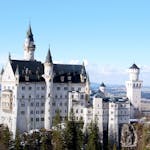Pondering the quiet grounds of the Grand Portage National Monument that overlook the vast emptiness of Lake Superior, you stretch to think that this site once was one of the busiest spots on the continent west of the Appalachians.
The swath of grass within a palisade of cedar logs is lush, even more so in odd rectangles where it's been left uncut. Turns out these overgrown shapes are a clever way of showing where buildings once stood, and where an empire flourished.
From 1784 to 1803, hundreds of trappers, traders, Indians and voyageurs would gather at this slight harbor just south of what now is the U.S.-Canada border to do business.
And what business! At one time, 70 percent of the world's fur trade flowed from the region's interior down to the lakeshore, to be loaded into massive 40-foot canoes and taken east to Montreal, to London, to Moscow — all in the name of fashion.
Specifically, beaver hats.
In its best year, more than 183,000 beaver pelts came through this main depot of the North West Co. Today, visitors in Gore-Tex and polar fleece learn from historical re-enactors about building birchbark canoes, grading pelts, baking bread and making a living in conditions that were at once backbreaking, bawdy and bucolic.
The popular Rendezvous Days and Powwow, on the second weekend in August, brings crowds. But a visit at almost any other time offers a better opportunity to browse at leisure, to have all of your questions answered, to pause long enough to envision a crew of cocksure voyageurs, their fringed sashes catching the breeze, arriving to feast and dance at the annual Rendezvous.
In other words, at a monument where having 200 visitors counts as a busy day, Grand Portage offers the rare opportunity not only to learn about the past, but to truly step away from the present.
Toward that end, some advice: This isn't a vacation destination on the order of Grand Marais. In fact, consider that North Shore town a likely base of operations, with Grand Portage a place to spend a few fascinating hours. Its website offers plans for visits of one to two hours, a half-day or a full day (bring your hiking boots).
If you really want the trapper's experience, you can hike the Grand Portage footpath from the stockade to several waypoints. After all, the Grand Portage — an ancient gap in the hills from the lake into the interior — was the rustic highway of sorts that streamlined the transport of all those pelts.
But if you have only a few hours, make sure to spend the 23 minutes it takes to watch "Rendezvous With History: A Grand Portage Story," a film that runs on the half-hour in the Heritage Center. Made in partnership with the National Park Service and the Grand Portage Band of Lake Superior Chippewa, the film features some members of the Ojibwe tribe, as well as other locals. It's thoughtful, informative, beautiful and humbling.
The monument's interpreters fulfill the goal of making history come alive, with the host of the Great Hall providing a deft "how we do it" explanation of what went into making beaver hats.
They weren't made of pelts, as many people assume, but are the final product of a long process that involves plucking the stiff guard hairs, then shaving the impossibly soft underhairs, then agitating the fibers so they mat.
This resulting felt then is molded over a hat form before it's shaped and brushed to a particular sheen that launched a thousand canoes, and several fortunes.
Today, there remains grass and contemplation. It's a good trade.
More info: nps.gov/grpo; 1-218-475-0123.





